What Happened...? A Reflective Process - RonaldMah
Ronald Mah, M.A., Ph.D.

Licensed Marriage & Family Therapist,
Consultant/Trainer/Author
Main menu:
for Parents & Educators > Handouts > Communication Conflict Handouts
What Happened to Me?...  Him/Her? Them?
Him/Her? Them?
 Him/Her? Them?
Him/Her? Them?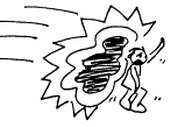
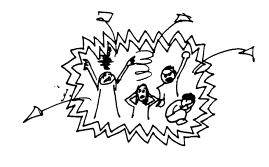
 What's Next?
What's Next?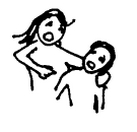
A Reflective Process After Trouble Strikes
(with illustrations for younger children, guide for use, and w/o illustrations for older children)
WHAT HAPPENED...TO ME?...TO HIM/HER?...THEM? WHAT'S NEXT?
A Reflective Process After Trouble Strikes (w/Illustrations)
ABOUT ME
1) What happened that bothered me.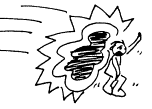

2) How I felt.

3) What I wanted.

4) What I didn't like.

5) What I did when I was upset.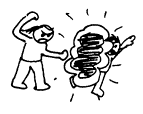

6) What rule did I break.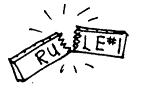

ABOUT HIM OR HER
7) How I affected this kid.

8) What he or she felt.

9) What he or she wanted.

10) What he or she didn't like.

ABOUT THEM
11) How I affected the class / yard / family.

12) How the other kids felt.

ABOUT ADULTS
13) How I affected the teacher(s) / my parent(s).

14) How the teacher(s) / my parent(s) felt.

THE FUTURE
15) What I want to happen instead.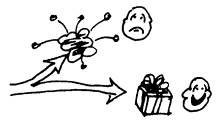

16) What I will do differently next time.

17) How teachers / parents / adults can help me.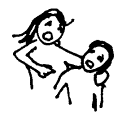

WHAT HAPPENED...TO ME?...TO HIM/HER?...THEM?
WHAT'S NEXT?
A Reflective Process After Trouble Strikes
GUIDE FOR USE
This offers an alternative to asking a child to "think about it" without effect, take time out without purpose, or to "write lines" in a meaningless and punitive manner.
Too often, when faced with a problematic child, adults are stuck without a pragmatic tool to create a positive resolution for the child, the other children, the adult, and the future. This attempts to create in a practical form an aid that will increase self-awareness, increase empathetic awareness, increase responsibility, and help to preclude future problems. This can be used as a guide for the child to consider or for the child to actually fill out, or for the adult to lead the child through; or even for younger children to "answer" with illustrations.
ABOUT ME
This first section purposely focuses on the child's feelings. Usually, when a child has gotten into trouble, he/she feels accused and gets immediately defensive. This precludes the possibility of a positive resolution to the trouble. Instead of interrogating the child as to what he or she did wrong (creating immediate resistance), this allows the child to express his/her thoughts and feelings; this also allows the adult to try to have empathy for the transgressor.
1) What happened that bothered me.
No facts. Facts are not relevant. By starting here, this offers validation to the child that he/she was bothered- that his/her sense of inequity or being harmed deserves consideration. This doesn't make what he/she did ok, but it does validate that he/she was upset.
2) How I felt.
Children often need to be lead to how they feel. "I felt.....", not "he/she did...." This is not an examination of the facts- only of his/her feelings.
3) What I wanted.
This acknowledges that the child did not get what he/she wanted.
4) What I didn't like.
This acknowledges that the child has a grievance that is real to him/her.
5) What I did when I was upset.
This is the pivotal question. This moves from acknowledgement of his/her grievance, feelings, etc. and moves to RESPONSIBILITY. It does not question the justification or not of doing the behavior, it only asks the child to state what he/she chose to do when he/she was upset.
6) What rule did I break.
For some situations, this is important. It is useful for concrete operational children- that is, clear concrete rules are best understood by children 6-12 years of age (older too!)
The next sections extend the responsibility theme raised in question 5. These lead the child to recognize not only how he/she is affected, but also how he/she affects others. This leads to empathy (taking on others roles, feelings is not easily done for young children). Note that these questions are a copy of the same questions asked of the child, but instead for others- i.e., how they felt. These questions validate that others feelings, wants, likes, and dislikes are important too. This also implies the power and control the child has over others' feelings, etc.
**Note: Expect the following sections to be difficult for the child. It asks for empathy- seeing and feeling the other (which is developmentally difficult for young children anyway, much less someone who feels admitting that the other has been negatively affected is tantamount to a confession of wrongdoing. He/she may be resistant. What they are resisting is the request for them to blame themselves. He/she does not yet understand that responsibility is not meant to be negative- and is not equivalent to blame! Instead of being frustrated at the child's difficulty in answering these questions, help him or her with the process- to own how he/she affected others. If the child could do this part easily, you wouldn't be using this material in the first place!
ABOUT HIM OR HER
7) How I affected this kid.
8) What he or she felt.
9) What he or she wanted.
10) What he or she didn't like.
ABOUT THEM
When a child goes ballistic, he/she usually is not aware of how he/she is affecting the greater community of the other kids. He/she often is unaware of how the other kids end up perceiving him/her- how they come to dislike him/her!
11) How I affected the class / yard / family.
12) How the other kids felt.
ABOUT ADULTS
When a child continues to have problems, he/she usually is not fully aware of how he/she is affecting the adult. He/she often is unaware of how the adult end up perceiving him/her- how the adult come to dislike him/her, become impatient, see him/her as trouble, and how it becomes painful for them both!
13) How I affected the teacher(s) / my parent(s).
14) How the teacher(s) / my parent(s) felt.
THE FUTURE
The point of all discipline is not only to deal with the current situation, but to also educate and prepare the child to be more successful in the future. So that everyone benefits from this process.
15) What I want to happen instead.
In the midst of conflict and anger, children often forget what they wanted to happen instead. This reminds them so that they can realize that with all the self-righteousness and anger that they have not been successful in getting what they want. This leads them to looking for better solutions (with your guidance).
16) What I will do differently next time.
Doing it the same is dead end! Doing something different offers the opportunity for something better to work out. This prompts the child to consider that he/she can do something differently! Help the child work out something different that may work out better next time.
17) How teachers / parents / adults can help me.
This creates a contract for the future, where your intervention at a time when things may start to get out of hand was requested by the child in this earlier contract. This sets it up so that it is not the child against the adult, but the child and adult in an alliance to make things successful for the child!
GOOD LUCK!!
WHAT HAPPENED...TO ME?...TO HIM/HER?...THEM? WHAT'S NEXT?
A Reflective Process After Trouble Strikes
(no illustrations)
ABOUT ME
1) What happened that bothered me.
2) How I felt.
3) What I wanted.
4) What I didn't like.
5) What I did when I was upset.
6) What rule did I break.
ABOUT HIM OR HER
7) How I affected this kid.
8) What he or she felt.
9) What he or she wanted.
10) What he or she didn't like.
ABOUT THEM
11) How I affected the class / yard / family.
12) How the other kids felt.
ABOUT ADULTS
13) How I affected the teacher(s) / my parent(s).
14) How the teacher(s) / my parent(s) felt.
THE FUTURE
15) What I want to happen instead.
16) What I will do differently next time.
17) How teachers / parents / adults can help me.
